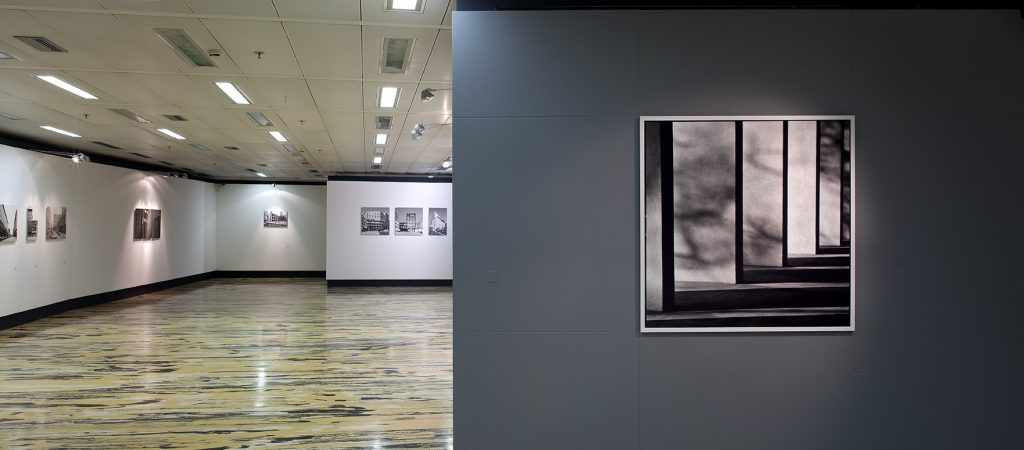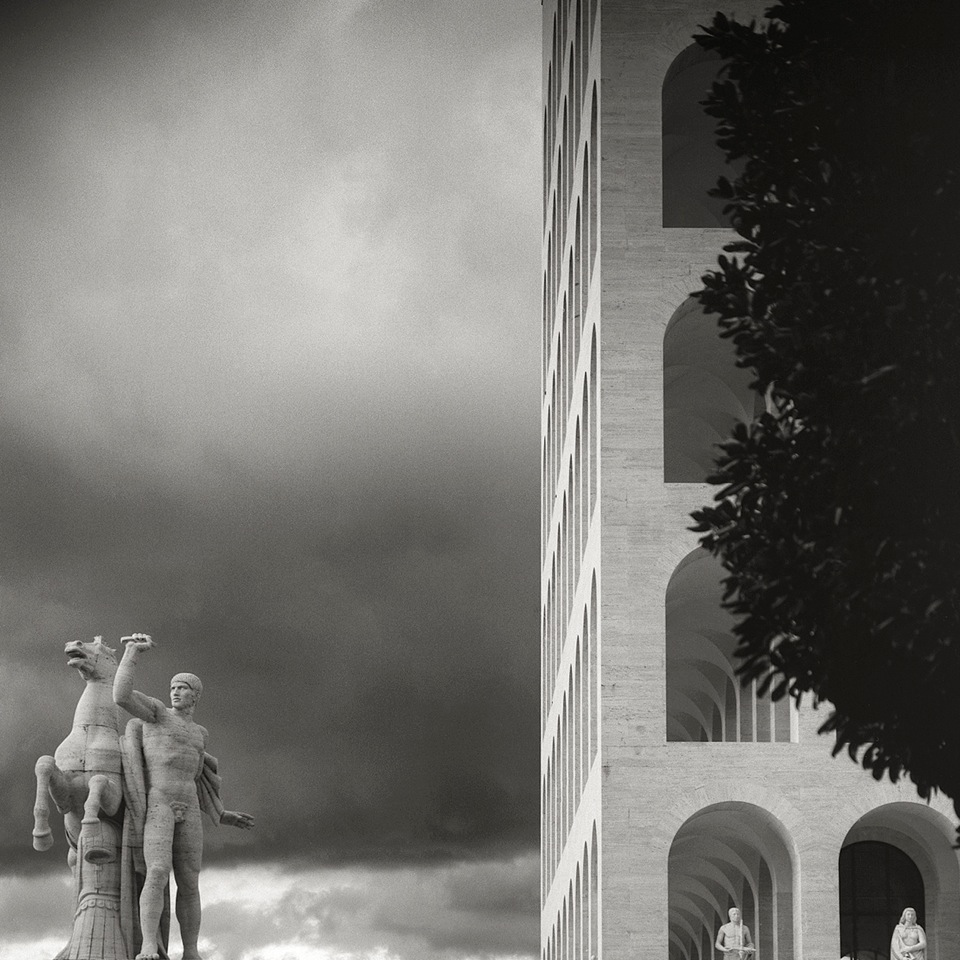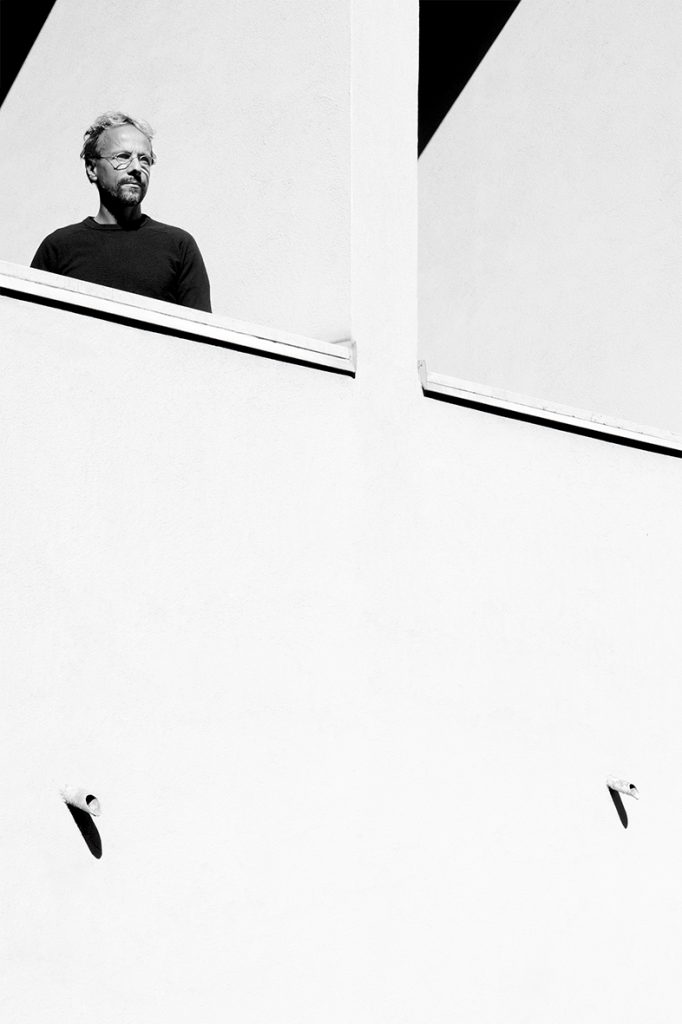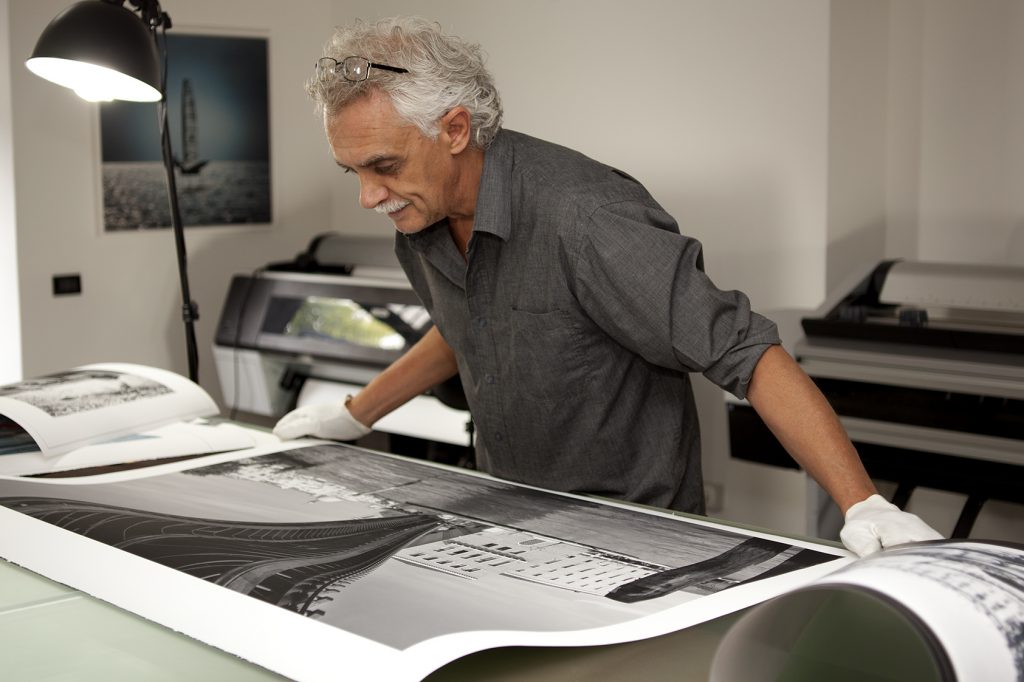Milan based photographer Matteo Cirenei was born in 1965. He graduated in Architecture at Milan’s Polytechnic and collaborates with architecture, design and fashion publications including Interni, Style, Domus, and with major fashion and furniture companies. In the early ‘90s, he began his photographic research in black and white on Architecture, while shooting extremely particular cuts of outstanding buildings in Milan and other European capitals boasting famous architectural works of art.
Interview by Alessia Locatelli
When did you discover your passion for photography?
During my high school years while reading magazines and manuals. I began to develop and print in black and white, in addition to my passion for colour slide photography.
How did you get into the photography world?
I used to use my knowledge of photography to support my university studies (architecture) and first made money by photographing two kinds of models: the human kind for advertising, and the building kind for architecture. After starting to work in the communications field and the furniture sector, I began photographing still-life objects and going to designers’ showrooms.
Why did you move into architectural photography?
It was a natural step, given my architectural studies, my passion for photography, and experience in the furniture and design sectors.
Which of your projects opened the door to the art and professional market?
Definitely the ‘Sundials’ project, which is a more than twenty-year research project into the aesthetics of architecture designed by the great masters.
Who has been your greatest inspiration?
Gabriele Basilico, the Italian architectural photographer par excellence, thanks to the visual language of his first project: ‘Ritratti di fabbriche’ (Factory Portraits). Also Ansel Adams, for the magnificent atmosphere he brought to landscape photography.

How important is it to have your own works printed?
A photograph is born to be printed, so for me it’s fundamental. And the process of creating the desired print is long and laborious, with both analogue and digital printing. Personally, I now find great satisfaction in digital printing that allows me to intervene in the light room first and then during the printing phase. The settings and ranges provided by Fine Art papers make this possible – whether I print the pieces myself or they are printed by my trusted printer – Bruno Melada in Milan, who I’ve been working with for over 10 years to create carbon pigment and large-format prints.
What is your favourite Hahnemühle paper and why?
I love the Museum Etching paper due to its coating. The tone is a bit warmer and it performs outstandingly when using both blacks and whites. I use Photo Rag Bright White for more ‘graphic’ images where the black and white have to stand out as much as possible while maintaining a very pleasant physical texture in the underlying paper. I like Photo Rag Satin for the perfect relationship it creates between the white point, the deep black point, and the details in the shadows. It features a warmer tone than that of the Bright White, and a satin finish which is very elegant.
Do you have a project on the shelf that you’re interested in working on sooner or later?
I am working on a project together with Marco Menghi on the works of the great structural engineer Pier Luigi Nervi, which I hope to be able to display in large format on the Museum Etching paper. It would be an exciting show. It’s also wonderful to see the architecture – unfortunately all too often ignored – being given a second life in my prints!
What projects do you have coming up?
My next exhibition, ‘Piano alto, vista Duomo due stagioni di torri milanesi’ (Top floor, overlooking the Milan Cathedral, Milan’s towers in two seasons) will be a collaboration with Maurizio Montagna at Milan’s Tulpenmanie Gallery, open throughout March 2017.



Interview by Alessia Locatelli








